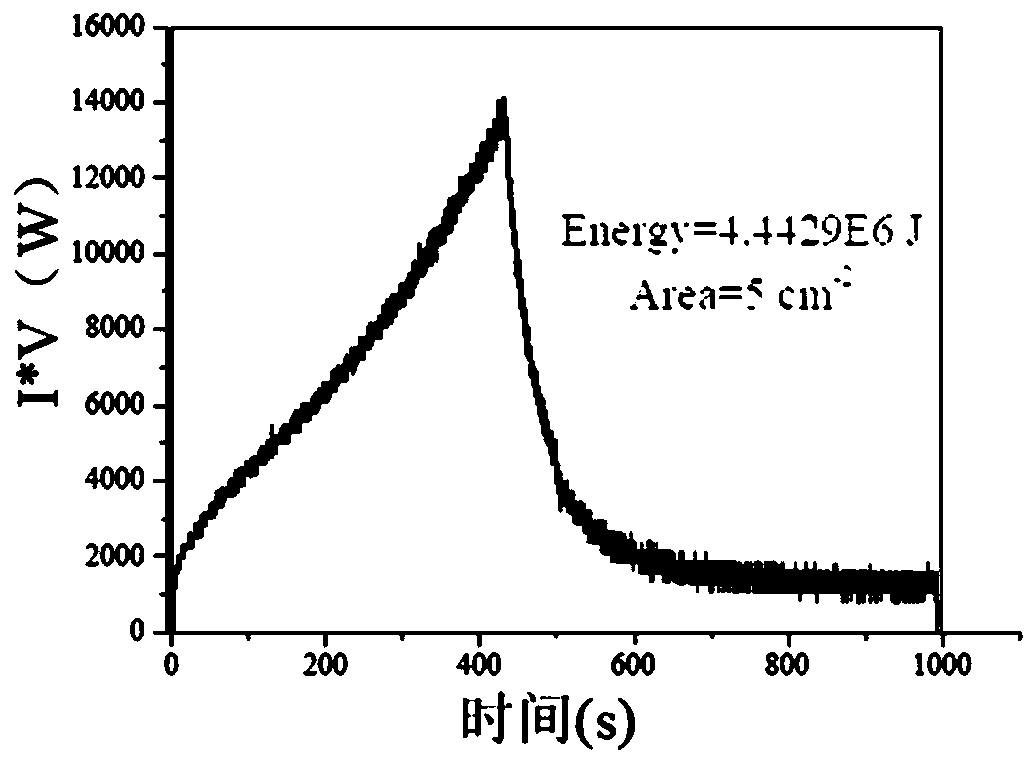Energy saving preparation method for aluminum electrolytic capacitor anodic aluminum foil
A technology of aluminum electrolytic capacitors and anode aluminum foil, which is applied in the direction of electrolytic coating, surface reaction electrolytic coating, superimposed layer plating, etc., to achieve the effect of reducing energy consumption
- Summary
- Abstract
- Description
- Claims
- Application Information
AI Technical Summary
Problems solved by technology
Method used
Image
Examples
Embodiment 1
[0043] Plasma-enhanced atomic layer deposition (referred to as PEALD deposition): clean the etched foil and put it into the reaction chamber, heat the etched foil to 80°C for 10 minutes in a vacuum of 10Pa, and pass Al(CH 3 ) 3 After the precursor, clean with high-purity nitrogen for 10s; after 10s of plasma oxygen is introduced into the reaction chamber (the radio frequency power is turned on at the same time, the power of the radio frequency power is 80W), and high-purity nitrogen is purged for 10s; the above repeated steps are recorded as a cycle, Al until etched on both sides of the foil 2 o 3 The film layer reaches 240cycles;
[0044] Electrochemical formation: calcinate the coated corrosion foil in an air furnace at 600±25°C for 10 minutes; then perform DC oxidation. The electrolyte temperature is 85°C, and 15% ammonium adipate is the chemical solution. At 50V, 50mA·cm -2 Oxidation under the parameters. Constant pressure continued for 10 minutes. Anneal in an air ...
Embodiment 2
[0046] ALD deposition: clean the corroded foil and put it into the reaction chamber, heat the corroded foil to 177°C for 10min in a vacuum of 10Pa, and inject Al(CH 3 ) 3 After the precursor, clean it with high-purity nitrogen gas for 10s; pour pure water into the reaction chamber for 7s, and clean it with high-purity nitrogen gas for 10s; the above repeated steps are recorded as a cycle until the Al on both sides of the foil is corroded. 2 o 3 The film layer reaches 240cycles;
[0047] Electrochemical formation: calcining the coated corrosion foil in an air furnace at 600±25°C for 30 minutes; then conduct DC oxidation. The electrolyte temperature is 85°C, and 1.4% ammonium dihydrogen phosphate is the chemical solution. At 100V, 50mA·cm -2 The oxidation was carried out under the parameters, and the constant pressure was continued for 10 minutes. Anneal in an air atmosphere at 600±25°C for 2±0.2min, and finally perform supplementary formation to obtain the final product. R...
Embodiment 3
[0049] ALD deposition: clean the corroded foil and put it into the reaction chamber, heat the corroded foil to 250°C for 20min in a vacuum of 10Pa, and inject Al(CH 3 ) 3 After the precursor, wash with high-purity nitrogen for 5s; pour pure water into the reaction chamber for 5s, and wash with high-purity nitrogen for 5s; the above repeated steps are recorded as a cycle, until the Al on both sides of the foil is etched. 2 o 3 The film layer reaches 240cycles;
[0050] Electrochemical formation: calcining the coated corrosion foil in an air furnace at 600±25°C for 30 minutes; then conduct DC oxidation. The temperature of the electrolyte is 85°C, 10% boric acid and 0.9% ammonium pentaborate are the chemical solution. At 200V, 50mA·cm -2 The oxidation was carried out under the parameters, and the constant pressure was continued for 10 minutes. Anneal in an air atmosphere at 600±25°C for 2±0.2min, and finally perform supplementary formation to obtain the final product. Record...
PUM
 Login to View More
Login to View More Abstract
Description
Claims
Application Information
 Login to View More
Login to View More - R&D
- Intellectual Property
- Life Sciences
- Materials
- Tech Scout
- Unparalleled Data Quality
- Higher Quality Content
- 60% Fewer Hallucinations
Browse by: Latest US Patents, China's latest patents, Technical Efficacy Thesaurus, Application Domain, Technology Topic, Popular Technical Reports.
© 2025 PatSnap. All rights reserved.Legal|Privacy policy|Modern Slavery Act Transparency Statement|Sitemap|About US| Contact US: help@patsnap.com



